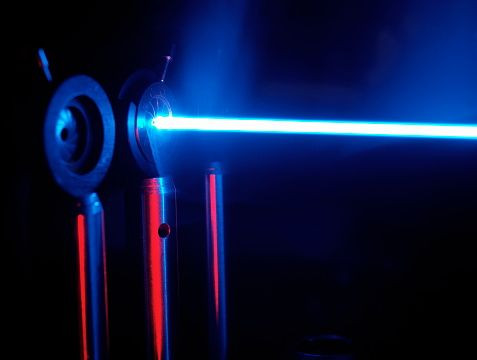Quantum Radios May Aid Underground, Underwater Communication In The Future

Have you ever been frustrated at the lack of cellphone signal inside a giant building? Not being able to use your map app indoors? Now, researchers have found that quantum physics might enable communications and mapping services in locations where GPS and ordinary cellphones and radios don't work like remote indoor locations, forests and even underwater or underground.
Imagine working in a submarine. Just to communicate with the outside world in case of an emergency, the whole ship has to rise to a depth lesser than 18 meters to send a one-way signal. Despite the leaps we have made in communication in the last decade with smartphones — GPS technology has become a common tool for most — this technology is limited as they don’t penetrate very deeply and cannot travel in water, soil or through building walls.
This is a major roadblock for people in high risk jobs that work underground or underwater or even soldiers fighting in remote jungles where a one bar signal could save thousands of lives by getting those airstrikes on time.
Now, researchers from the National Institute of Standards and Technology (NIST) have used very low frequency (VLF) digitally modulated magnetic signals to successfully send signals through building materials, water and soil with a much greater efficiency than conventional communications signals, which operate at much higher frequencies.
These VLF electromagnetic fields are already used by submarines to send emergency signals. But, there's not enough data-carrying capacity in this technology for it to carry large files across. Underwater to land communication is restricted to telegram like short text messages.
"The big issues with very low-frequency communications, including magnetic radio, is poor receiver sensitivity and extremely limited bandwidth of existing transmitters and receivers. This means the data rate is zilch," NIST project leader Dave Howe said in a press release.
"The best magnetic field sensitivity is obtained using quantum sensors. The increased sensitivity leads in principle to longer communications range. The quantum approach also offers the possibility to get high bandwidth communications like a cellphone has. We need bandwidth to communicate with audio underwater and in other forbidding environments," he added.
The researchers showed that a magnetic-field sensor that uses rubidium atoms could detect magnetic signals. The technique used varying magnetic fields to control the frequency of the transmitted signal. This way the team was able to get both a high bandwidth and highly sensitive receivers, making the signal transmission very efficient.
"Atoms offer very fast response plus very high sensitivity," Howe said. "Classical communications involves a trade-off between bandwidth and sensitivity. We can now get both with quantum sensors."
The quantum method was found to be more sensitive than conventional magnetic sensor technology and could be used to communicate, Howe said.
The receiver used a direct-current (DC) magnetometer in which a polarized light is used as a detector to measure the "spin" of rubidium atoms induced by magnetic fields from the signal. The atoms are in a tiny glass container. Changes in the atoms' spin rate correspond to an oscillation in the DC magnetic fields, creating alternating current (AC) electronic signals, or voltages at the light detector. These signals are a very efficient means of information transfer.
The sensor can detect signals at very low frequencies, even below the 3-30 kHz, which is the frequency of some government and military services. The device even tuned out ambient noise from other electronic devices which increased the channel capacity.
To improve performance further, the NIST team is now building and testing a custom quantum magnetometer to develop improved transmitters.
The researchers published their results in the December issue of the Review of Scientific Instruments.
© Copyright IBTimes 2024. All rights reserved.





















